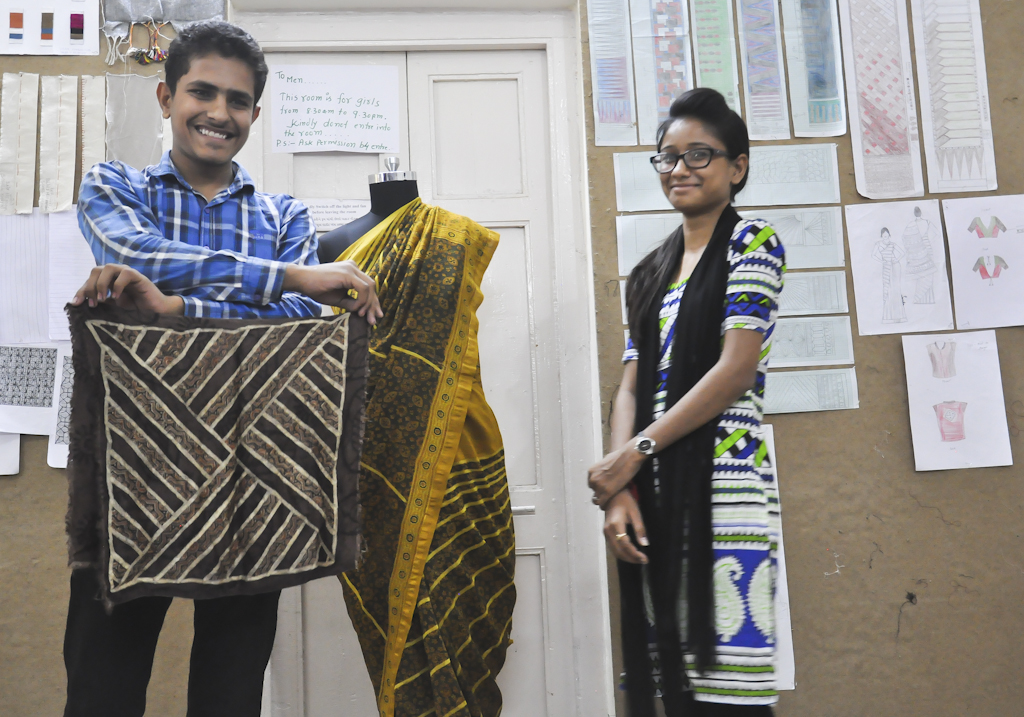THOUGHTS ON CRAFT POLICY
A few days ago I was invited to A Consultative Workshop on Policy Challenges in the Handicrafts Sector in Gujarat.
Since I have pretty much avoided government after several frustrating experiences, I had to take a deep breath and alter my perspective. In the end, it was a worthwhile exercise, and I am sharing here what I came up with.

So here is what I recommended that the Government can do for craft, in three parts:
1. RE-VISIT THE BASIC PREMISE of ARTISAN AND CRAFT
First, reimagine craft and artisans– if that is possible. There is an internationally shared perception about artisans in developing countries that is deeply embedded. I come across it constantly. Here are a few recent examples:
*A designer for a high end western company was annoyed that an Indian artisan should sell his work in a western country at western prices. She thought that it should be valued at his daily income in his country.
*An agency to which I submitted images of artisans studying in our Business and Management course wanted images of our process. Education is our process.
*Our website designer similarly felt we needed to include images of artisans. I had to explain that the men and women in the classes ARE artisans.
They both expected to see women wearing veils bent over their work- no faces necessary; workers.
*Talking of co-design, one company said they loved co-design, and then sent me the standard spec sheet with nary a hair’s breadth for variation. They wanted a technician, a worker.
We need to change the bechara perception of artisans, to think of them as artisans, not workers. We need to find a new language for discussion, not “languishing,” “helping” or “saving.”
We need to think of artisans as professionals, and encourage entrepreneurship, self-reliance, self-respect, responsibility.
This means thinking in terms of opportunity rather than subsidy.
Do not even think of craft and industry in the same discussion. Encourage two separate markets. Rahul Jain recently wrote a very thought provoking article in Mint about this.
Do not think of craft wherein the goal is big production, faster, cheaper, more standard. This will, hopefully! eliminate ideas such as hand loom for railway sheets, polyester school uniform yardage, and towels. Craft should aim for a high end, luxury market.
2. CONSIDER WHAT ARTISANS NEED
Access to quality raw materials. This means
*Easy loans
*Information on suppliers- a sample bank with contact information
Accessible Education in design- in terms of language, culture, timing and cost
Accessible Education in Business, Management and Entrepreneurship
Information on markets, perhaps an annotated dynamic data base- a Wikipedia of domestic and international craft markets
Marketing opportunities that are good- carefully selected venues, good advertising campaigns, good mailing lists- and good sales
Artisans can be called to apply to events and selected on a juried basis- transparent and fair, with feedback on making more saleable products next time
Effective, easy to access Health care/ insurance policies
Provident funds or the equivalent
3. WHAT ELSE THE GOVERNMENT CAN DO
Market craft. The Gujarat Government has proved very capable in marketing- note how they have marketed tourism! Get a high profile brand ambassador
Craft can be marketed as a great and wonderful resource, not a good deed
Provide an exclusive market for replicas of the excellent National or State Awards – one of a kind or limited editions
Encourage higher end shops
Make schemes easy to access and easy to implement
Work transparently and honestly as partners, to facilitate
When thinking this through, I remembered an interview I did in 2003 with Dr. Ismail Khatri, Ajrakh master and recipient of an honorary doctorate from DeMontfort University in UK. Asked what the Government could do for artisans, he replied:
“Provide good roads, clean water, reliable phone and mail service, and relevant education within a reasonable proximity of villages. In addition to that, socialized medicine and effluent treatment would benefit us a lot. If the Government just provides these basic facilities, we can take care of crafts. If we can devote our energies fully to our work, there is no need of subsidy.”



